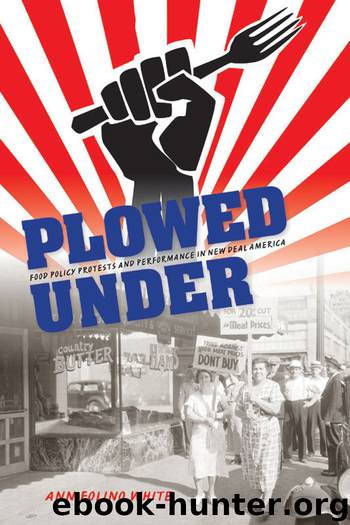Plowed Under by White Ann Folino

Author:White, Ann Folino
Language: eng
Format: epub
Publisher: Indiana University Press
The La Forge Experiment: An Eden Inciting Rebellion
While the AAA left many sharecroppers without a viable place in agriculture, the FSA undertook programs to aid landless farmers. Among these was an extensive photography project to document rural poverty, a series of cooperative farming projects, and the administration of migrant labor camps in California for those fleeing the Dustbowl. The FSA’s cooperative farming programs came under fire from large-scale farm operators for being socialistic and for poaching laborers from plantations. In Missouri, landowners disdained the FSA’s La Forge project for these reasons and for its interracial arrangement. According to Missouri landowners and powerful figures in Missouri’s rural cotton counties, the federal government’s 1937 socioagricultural experiment in La Forge, Missouri, laid the foundation for disorder and rebellion in 1939.
In 1937, the FSA bought a 6,700-acre plantation near La Forge, Missouri, in New Madrid County. This cooperative farming experiment was designed to improve the land’s fertility and create better economic and social conditions for farm laborers. The land was divided into individual farms (on which cotton, corn, and soil-regenerating crops were planted), and the FSA gave each family a $1,300 loan. Families rented homes and land from the federal government. Tenants and croppers living on the land at the time of purchase became the project’s residents, including about sixty white families and forty African American families. The FSA’s report on the project intimated the social program within La Forge’s economic interests: “It wanted to find out whether these run-of-the-mill share-croppers could make a decent, secure living if they had a chance under different conditions.” La Forge tested the capabilities of a social group that was largely perceived as culpable for its own plight. Fully operational in spring 1938, La Forge consisted of new homes, “an efficient barn, a sealed well, fences, food storage vaults and a sanitary privy.” La Forge residents cooperatively purchased major equipment and ran the gin on the plantation. Additionally, the FSA provided educational programs on such things as home gardens and raising livestock. Schools were built for the white and African American children, and a health program was established. By December 1939, each family’s worth had increased from $28 to $1,474.71, and the government had already recouped nearly $100,000 on an approximately $800,000 investment. La Forge was an indisputable success according to the federal government and the residents.28
Opposition from powerful Missourians squelched federal plans to aid additional landless farmers through programs modeled on La Forge. The same year La Forge was established, the federal government intended to purchase five thousand acres in nearby Mississippi County on which to resettle African American sharecropper families. Congressman Orville Zimmerman (Democrat-Mo.) urged Dr. Will Alexander of the FSA to halt plans. In his letter, Zimmerman enclosed petitions signed by county court judges, county officers, and citizens from the Dogwood, Armer, and Belmont school districts. He expressed sincere concern that such a settlement would cause an outrage: “I am convinced that a serious racial situation would be created in that county if this proposal is carried through.
Download
This site does not store any files on its server. We only index and link to content provided by other sites. Please contact the content providers to delete copyright contents if any and email us, we'll remove relevant links or contents immediately.
The Secret History by Donna Tartt(16606)
The Social Justice Warrior Handbook by Lisa De Pasquale(11485)
Thirteen Reasons Why by Jay Asher(7779)
This Is How You Lose Her by Junot Diaz(5753)
Weapons of Math Destruction by Cathy O'Neil(5027)
Zero to One by Peter Thiel(4816)
The Myth of the Strong Leader by Archie Brown(4785)
Promise Me, Dad by Joe Biden(4439)
Stone's Rules by Roger Stone(4410)
Beartown by Fredrik Backman(4399)
How Democracies Die by Steven Levitsky & Daniel Ziblatt(4392)
The Fire Next Time by James Baldwin(4336)
100 Deadly Skills by Clint Emerson(4070)
A Higher Loyalty: Truth, Lies, and Leadership by James Comey(4024)
Rise and Kill First by Ronen Bergman(4008)
The David Icke Guide to the Global Conspiracy (and how to end it) by David Icke(3875)
The Farm by Tom Rob Smith(3869)
Secrecy World by Jake Bernstein(3773)
The Doomsday Machine by Daniel Ellsberg(3725)
